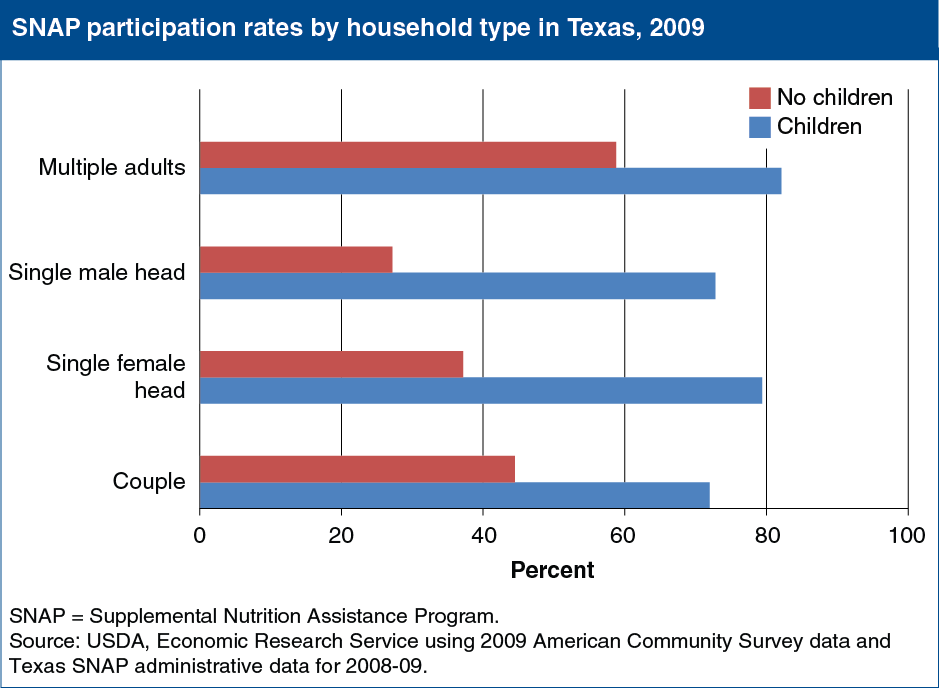Households with children have higher rates of participation in SNAP
- by Economic Research Service
- 9/24/2013

Estimates of Supplemental Nutrition Assistance Program (SNAP) participation rates—the proportion of eligible individuals who receive SNAP benefits—are regularly published at the State and national level. Estimates of SNAP participation by the elderly, children, or other subpopulations within individual States, however, have not previously been available due to data limitations. ERS researchers overcame these limitations by linking SNAP administrative records to individual records in the Census Bureau’s American Community Survey, using Texas as a pilot study. Researchers found significant geographic and demographic differences in SNAP participation within the State. Nationally, participation rates are higher for households with children than for childless households, a pattern also evident in Texas. Overall, Texas households with children were about twice as likely to participate in SNAP as households without children in 2009. The presence of children in a household was associated with significantly higher participation across all household types—households headed by couples, single females, single males, and households composed of multiple unmarried adults. This chart appears in Supplemental Nutrition Assistance Program (SNAP) Access at the State and County Levels, ERR-156, released September 19, 2013.

